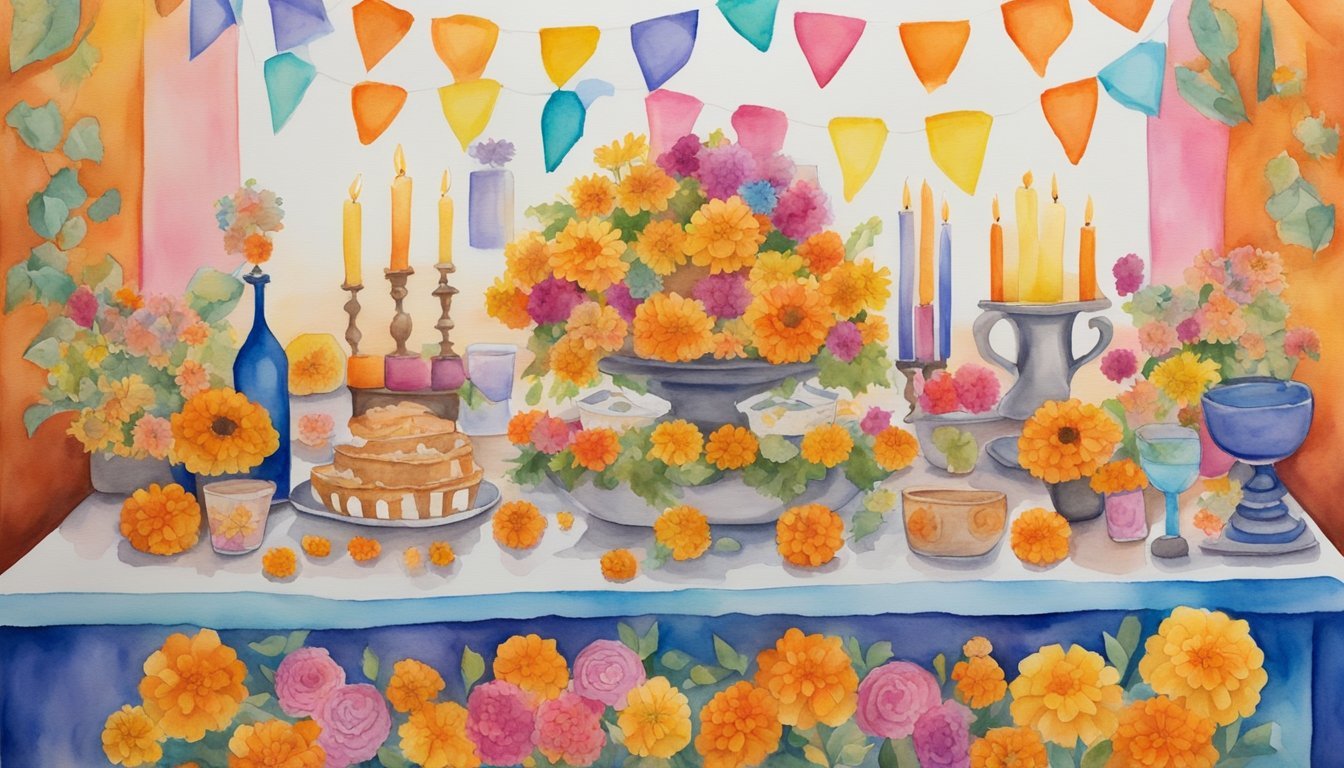Essentials of a Dia de Los Muertos Altar
Creating a Dia de Los Muertos altar, or ofrenda, is a profound tradition in Mexican culture, embracing rich symbolism and meticulous arrangements to honor the deceased during this vibrant celebration.
Significance and Origin
The tradition of constructing an altar for Dia de Los Muertos, or Day of the Dead, stems from a blend of pre-Hispanic indigenous practices and Catholic traditions introduced by Spanish colonizers. Celebrated mainly in Mexico from November 1st to 2nd, these altars are not for worship but for welcoming the spirits back to the realm of the living. They represent a unique synthesis of the cycle of life and death, venerating ancestors with offerings and festivities.
Traditional Structure and Elements
A typical Dia de Los Muertos altar includes several layers, often three, corresponding to the journey of the soul. Marigolds, or “Cempasúchil,” are ubiquitously placed to guide the spirits with their vibrant color and scent. Personal items, photographs, and favorite foods of the departed are essential components, alongside “Pan de muerto,” a sweet bread symbolizing the soil. La Catrina, an emblematic figure of the celebration, personifies death with elegance and humor. These deeply personal and elaborate altars serve as a bridge between the living and the spirits during the festivities.
Representing the Four Elements
The altar embodies the four natural elements. Water is provided to quench the thirst of the souls; candles, representing fire, illuminate the way; wind is invited through the movement of paper decorations, including intricate papel picado; and earth is symbolically present through food, particularly bread. Incorporating these elements is believed to balance nature and attract the spiritual essence of the departed during the Days of the Dead.
Creating Your Own Altar

When constructing a Dia de Los Muertos altar, it’s important to merge tradition with personal significance, showcasing items that have meaning to the spirits being honored. These altars often feature photographs, favorite foods, and cherished belongings of the departed, creating a deeply personal tribute. Just as Daniel Libeskind architectural works blend history and emotion through design, a well-crafted altar tells a story that connects past and present. Incorporating both customary elements like marigolds and candles with unique, heartfelt touches ensures a meaningful and respectful homage to loved ones. Including symbols that reflect the personality and passions of the deceased can make the altar even more special, fostering a deeper connection between the living and their ancestors. Just as the easter island mysteries continue to captivate researchers with their hidden meanings, an altar serves as a bridge between the seen and unseen, preserving memories and honoring traditions. Thoughtfully chosen elements help keep the spirit of loved ones alive, ensuring their presence is felt in a meaningful way.
Steps to Making an Altar
First, select a space for your altar and cover it with a vibrant tablecloth. Traditionally, altars have three levels, representing the underworld, Earth, and Heaven. Begin by setting candles to light the way for the spirits. Then, scatter marigold petals, which symbolize death but also the sun, guiding souls to their offerings.
Place a glass of water to quench the thirst of the spirits, and a dish of salt to purify them. Arrange pan de muerto, a special bread, along with other foods and drinks favored by the departed. Include tamales, which are a festive and traditional dish.
Adorn with paper decorations like papel picado, which represents the wind and the fragility of life. Sugar skulls (calaveras) symbolize the personalities of the departed, and toys may be added for children. Incense, particularly copal, is used to elevate prayers and cleanse the space. Candles are placed on the altar to light the way for spirits returning to visit their loved ones. Favorite foods and drinks of the deceased are also included as offerings, welcoming them back with familiar comforts. For those interested in historical sites, exploring glamis castle visitor tips can provide insight into one of Scotland’s most famous and storied landmarks.
Incorporating Personal Touches
The heart of the altar is personalization. Including photos and personal belongings of the deceased reestablishes the memories and presence of those who have passed. Decorate with their favorite sweets and trinkets to give the altar a familiar feel. Each item represents a connection, a memory, and a gesture of welcome to the souls during Dia de Los Muertos.

